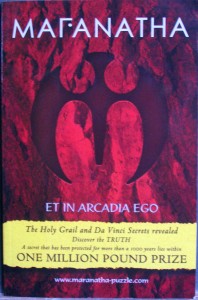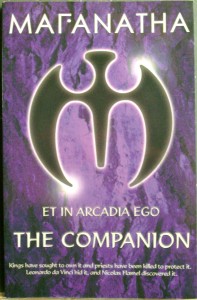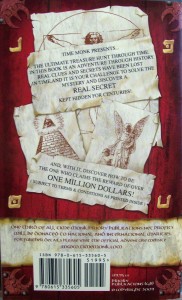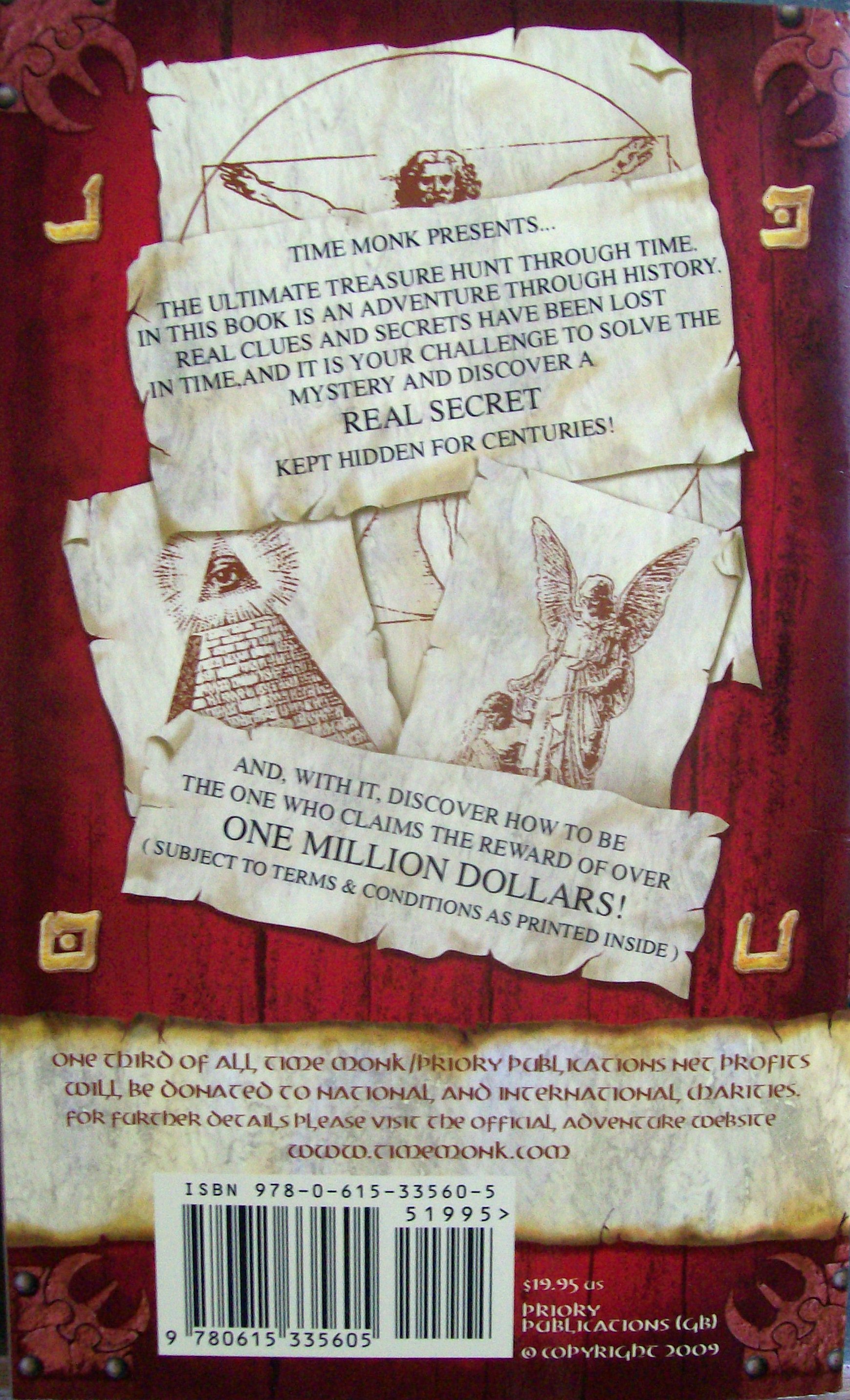The Maranatha puzzle competition and series came to a close before all of the initially planned puzzle books were published and released. Two puzzle books; one in search for a Key and the other in search for the Holy Grail (using the Key) were originally intended. Each of these was then to be followed up with an answer or further explanatory book for the puzzle preceding it.
Soon after the release of the puzzle, the authors realized a guide book would be beneficial to those working on the armchair treasure hunt. They decided to change the scheduled companion for the first book into an aid for the solving of the puzzle. Basically, these were the only two books ever released. A newer version of the first book was published but it consisted of the same puzzle.
 The first book of the Maranatha-Et in Arcadia Ego puzzle came in the form of a small 5×8 paperback. Noted by many puzzlers, it was divinely proportioned. The Golden Ratio could be recognized by the size of the cover and the pages within. Eventually taking on the name of the LRB for Little Red Book, it was found to contain a tangled web of words. The symbol on front was thought by some to be a clue to the Key, if not, somehow the re-forged Key itself.
The first book of the Maranatha-Et in Arcadia Ego puzzle came in the form of a small 5×8 paperback. Noted by many puzzlers, it was divinely proportioned. The Golden Ratio could be recognized by the size of the cover and the pages within. Eventually taking on the name of the LRB for Little Red Book, it was found to contain a tangled web of words. The symbol on front was thought by some to be a clue to the Key, if not, somehow the re-forged Key itself.
The index, which was questionably in front, listed the following sections of the book; The Prize/The key, The Story/The Puzzle, Nicolas Flamel and the Philosopher’s Stone, The Book & The Quest Begins, Timeline, Bibliography & suggested Reading, Terms & Conditions, Charity Declaration, and Future Releases. The book also included Author’s Notes which gave a brief introduction to the hunt. All total it was 80 pages (xxx and 50).
The decoded text of sentences and fragments, although strange in themselves, led to the investigation of other mysterious writings like the parchments of Rennes le Chateau, Le Serpent Rouge, or The Chymical Wedding of Christian Rosenkruetz; to name but a few. The spokesperson for the hunt advised readers to explore unfamiliar names, places, and things of the text.
 The Companion, which soon followed, helped with this exploration. The many terms used in the text were expanded upon in the just over 200 page book. Small in size, like the first, the book was said to be made so it could be “easily carried in a pocket.” It contained the complete decoded text in both paragraph and grid-like form. It did not include the images.
The Companion, which soon followed, helped with this exploration. The many terms used in the text were expanded upon in the just over 200 page book. Small in size, like the first, the book was said to be made so it could be “easily carried in a pocket.” It contained the complete decoded text in both paragraph and grid-like form. It did not include the images.
The third book was a re-vamped version of the first. Author’s Notes were still included and this time the Index was correctly the Contents. It listed the same sections. In the original edition, the page numbers given for the beginning four sections were wrong. The Prize/The Key was said to start on page ix. It actually started on page xi. The others were as follows:
The Story/The Puzzle….xii (the correct page was xiv)
Nicolas Flamel and the Philosopher’s Stone…xiv (the correct page was xvi)
The Book & The Quest Begins…xxvi (the correct page was xxix)
 As can be deduced, the page numbers were off by 2,2,2,3. Many thought this to be a clue. However, this ‘mistake’ was not found in the newer version. But either was the ‘Find a Devil’ anagram and most puzzlers still thought that was a genuine hint. This edition was made up of 96 pages (xii and 84).
As can be deduced, the page numbers were off by 2,2,2,3. Many thought this to be a clue. However, this ‘mistake’ was not found in the newer version. But either was the ‘Find a Devil’ anagram and most puzzlers still thought that was a genuine hint. This edition was made up of 96 pages (xii and 84).
It should be mentioned the page numbers of the encrypted text and images had changed. For example, the 5th image of the serpents entwining the staff was now on page 35 and not 13 of the puzzle. One could conclude then the page number themselves were not vital or would not help with the solving of the puzzle.
Also noticed was the back cover which included different images. The faint image of the Vitruvian Man in the background of the first remained in the background of the second; but was prominently displayed with the Eye of Providence and an Angel with a demon in chains (seen on the ‘bookplate of Sauniere’). These images were included on the home page of the new Time Monk website too (now gone).
Scattered Pig pen letters were seen across the front and back covers. Mothman (username on tweleve forum) discovered these to be anagrams for the names of Benjamin and Jacob and believed to be a tribute to the Author’s sons. Some believe an additional meaning or hint of hidden sons/suns may be implied.

The books themselves were professionally done. When asked by a puzzler in a Chat Session with the author why the seven images were ‘wonky’, it was said to give the appearance of “an aged old book.”
And so the books are. It is possible to purchase the books now and again through sites like EBay. Although this site will try and provide information about the puzzle, nothing is quite like having the true source.
Readers who followed and pursued the hunt, along with new puzzlers, would have entered next into the final book of Maranatha- I Tego Arcana Dei. From what was known, the concluding green puzzle book of the series would have guided a reader to the Holy Grail by using the Key which was discovered from the hunt.
It is believed that even though the final books (the Grail puzzle and its companion) will not be published, anyone can continue and find the Holy Grail on his own. Things changed, that’s all. One can persist with information from the puzzle or on his own. The hunt for the Holy Grail is only ever over by one’s own choice.


A theory about why the first puzzle book was red and the second was expected to be green: The first book was meant to take puzzlers through the trials of water and fire, and the last trial, fire, would have red colour. The second book was meant to take puzzlers through the trials of air and earth, and the last trial, earth, would have green colour.